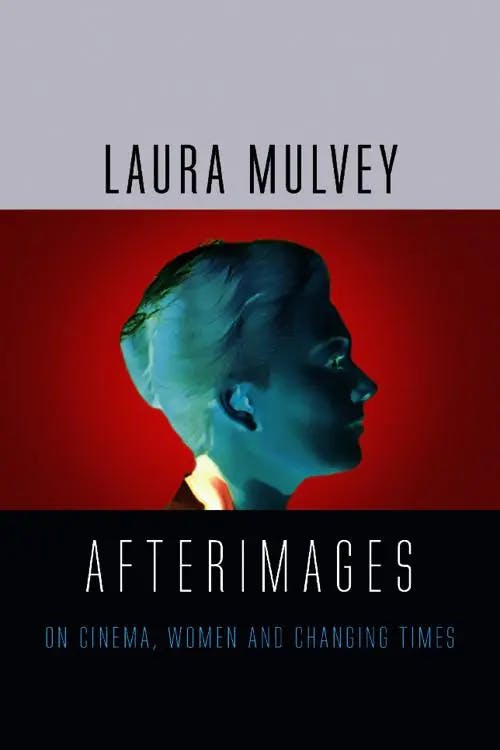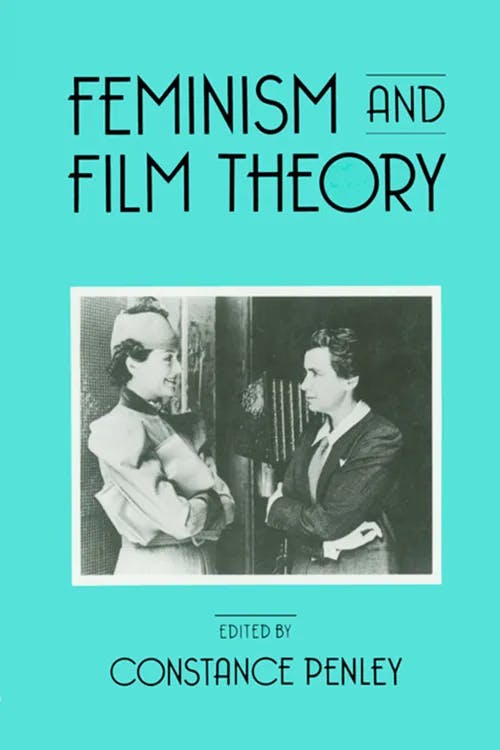What is Laura Mulvey's Male Gaze Theory?
PhD, Media Arts (Royal Holloway, University of London)
Date Published: 12.03.2023,
Last Updated: 31.01.2024
Share this article
Defining The Male Gaze
Laura Mulvey’s theory of the ‘male gaze’ has come to play a significant role in critical understandings of the function of cinema. The term ‘male gaze’ first appeared in John Berger’s Ways of Seeing (1972) but was popularized by Mulvey in her essay ‘Visual Pleasure and Narrative Cinema’ (1975), reprinted in Feminism and Film Theory (2013). Since then, the term ‘male gaze’ has expanded beyond the realm of academia and made its way into popular discourse. In Afterimages: On Cinema, Women and Changing Times, Mulvey later acknowledges the dissemination of this idea, reflecting,
As Mulvey suggests, the poignancy and usefulness of such an idea has made it a fundamental approach to film analysis and farther afield. ‘The male gaze’, observes James Bloom in Reading the Male Gaze in Literature and Culture, ‘now reverberates throughout cultural conversations across disciplinary and national boundaries’ (2017). But what are these conversations and what is their social and cultural significance?
Based on feminist interpretations of psychoanalysis, Mulvey’s essay reflects on the act of ‘looking’ in cinema. Firstly, she describes the viewer experience as one of ‘scopophilia’, meaning a sort of sexual pleasure derived from looking at others. When we watch films, we are typically in a darkened room, facing the screen, with little interaction with the other audience members, almost as if we are alone, ‘looking in on a private world’ (2013). The action on the screen then becomes the satisfaction of our voyeuristic desires.
Mulvey investigates the way that cinematic conventions augment this voyeurism and concludes that prevalent social structures are reflected and reinforced through the cinematic eye. She sets out to examine that way that ‘film reflects, reveals and even plays on the straight, socially established interpretation of sexual difference which controls images, erotic ways of looking and spectacle’ (2013).
Mulvey works with the premise that film is a reflection of the dynamics at work in everyday life. She proposes that cinema has coded a particular way of seeing; a type of ‘looking’ that the audience unconsciously participates in (2013). Whether or not the viewers are aware of its effect, this gaze supports and reinforces patriarchal structures. It is these ‘erotic ways of looking’ that ‘the male gaze’ describes and it is the women on screen who receive such looks (2013). Of this, Mulvey writes:
When women are portrayed on screen, Mulvey suggests that there are two parts to the act of ‘looking’ that take place. Firstly, the characters within the narrative of the film look at the female character and secondly the cinematic audience look at the female character. We will see how, in Mulvey’s assessment, this positions the eye of the camera with which the audience identifies as that of the heterosexual male and the object of that gaze is female.
The Male Gaze as a Reflection of Patriarchal Ideology
The male gaze has significance beyond the world of cinema. Its danger lies in its correspondence to the societal positioning and treatment of women. Because the male gaze is so intrinsic to cinema, film, as a result, ‘speaks the language of the patriarchy’ (2013). This patriarchal ideology constructs women in relation to men; women are a canvas on which male desires are projected, hence subverting female agency and power. Mulvey explains,
Woman then stands in patriarchal culture as a signifier for the male other, bound by a symbolic order in which man can live out his phantasies and obsessions through linguistic command by imposing them on the silent image of a woman still tied to her place as a bearer of meaning, not maker of meaning. (2013)
It is this power that the male gaze enacts. The male gaze, and the social structure it is a product of, unequivocally privileges men.
Part of this privilege is exemplified through the way that the male gaze shapes cinematic narrative. Mulvey observes that ‘when women appear on screen as erotic objects, they often halt the narrative progression, and we are encouraged to possess them with our gaze’ (2013).
The genre of Film Noir is an example that Mulvey provides in ‘Visual Pleasure and Narrative Cinema’. The introduction of the Femme Fatale, for example, is a cause for pause in the narrative action, prompting the audience to take their time looking at her, just as the male protagonist does. Mulvey describes this ‘freeze’ in the ‘flow of action’ as a moment of ‘erotic contemplation’ (2013). This can be observed in the first glimpse of Femme Fatale, Cora (Lana Turner), in The Postman Always Rings Twice (Tay Garnett, 1946):
The slow pan up the body of a potential female love interest is a recognizable cinematic trope across a myriad of genres. It is one of the many ways that film establishes the male gaze. The camera acts as the eye of the male observer, who looks the female character up and down. In so doing, the camera partitions the female form: the woman is not a whole entity but a series of body parts. This satisfies what Mulvey calls ‘the pleasure in looking at another person as an object’ (2013).
At first sight, women become an ‘object of the combined gaze of the spectator and all the male protagonists in the film’, exemplified by the above sequence (2013). Cora is reduced to a series of sexual parts by the male gaze. This sense of objectification is heightened in the way this moment interacts with the filmic narrative. The male protagonist usually drives the action of the film, and he is the one who pauses to enact this objectification of the female character. Hence, the arrival of the female character suspends the narrative progression. In this paradigm, the male is active, and the female is passive. Between the camera’s wandering eye and the narrative control, the audience’s sense of identification lies with the male characters, and the female characters become an objective other; she becomes what Mulvey describes as a mere ‘icon, displayed for the gaze and enjoyment of men’ (2013).
This is one of the many ways that Mulvey theorizes cinema to perpetuate patriarchal structures. By privileging the view of the male characters, by placing the narrative action in their hands while the female characters remain passive objects of this male point of view, women in cinema become reduced to their visual allure and what scopophilic satisfaction they offer. ‘By means of identification with him’, Mulvey says of the male character, ‘through participation in his power, the spectator can indirectly possess her too’ (2013). In placing the locus of control – both the power of looking and the power of agency – on the male characters and inviting the audience to participate in the exercising of such control, film ideologically supports and maintains an oppressive status quo in the real world.
The Male Gaze in Classical Hollywood: An Example from Rear Window (Hitchcock, 1954).
Mulvey provides several examples from classical Hollywood in ‘Visual Pleasure and Narrative Cinema’. Of these, Alfred Hitchcock’s Vertigo (1958), Marnie (1964), and Rear Window are referenced as pieces of cinema that not only hold the concealed filmic language of the male gaze, but in which ‘the look is central to the plot’ (2013). Mulvey supports Douchet’s interpretation of Rear Window as ‘a metaphor for the cinema’ (2013). In examining the opening sequence to Rear Window, the complexity of the gaze can be observed:
Although at first, Jeff (James Stewart) has his back turned to the window, the preceding sequence invites the audience to watch the events unfolding from his window, positioning the viewers to voyeuristically engage with Jeff’s surroundings even when he is not. This immediately establishes the gaze of the audience both as an independent voyeur and an occupant of Jeff’s space, creating a sense of identification with the male protagonist. Once Jeff is on the phone, he gazes out the window, returning to the same voyeuristic vantage point at the beginning of the scene. In both the gaze of the audience and Jeff’s, the woman across the way, scantily-clad in the privacy of her home, dances and stretches as she moves around her room. The provocation of these actions only comes from her cinematic treatment; the fact that she is unknowingly being watched. The gaze is what sexualizes her. This exemplifies the bifold act of looking that Mulvey identifies, where both the male character and the audience participate equally. Mulvey observes,
Hitchcock’s skilful use of identification processes and liberal use of subjective camera from the point of view of the male protagonist draw the spectators deeply into his position, making them share his uneasy gaze. The audience is absorbed into a voyeuristic situation within the screen scene and diegesis which parodies his own in the cinema. (2013)
Mulvey suggests that Hitchcock draws attention to the voyeurism enacted in watching a film, unfolding the gaze from the male protagonist to the audience. Jeff looks into the private lives of his neighbours. Meanwhile, the audience looks into the private life of Jeff and, through Jeff, the lives of his neighbours. Mulvey suggests that Hitchcock is exploring the psychology of a non-reciprocal look, exemplifying the way in which women are the ultimate object of such voyeurism.
The Male Gaze & the Objectification of Women in Popular Culture
The particular way of looking which the male gaze describes can be seen across a multitude of cultural mediums. Despite being first identified by Mulvey in classical Hollywood cinema, the theory of the male gaze can be extended to apply to a number of different modes of pop culture today.
In Reading the Male Gaze in Literature and Culture, Bloom emphasizes the way that ‘male gazing permeated the most durable hit songs of the twentieth century’, citing songs like ‘Standing On The Corner’ (The Four Lads, 1956), and ‘Can’t Take My Eyes Off of You’ (Frankie Valli, 1967). Despite not being a foremost visual medium, these sorts of lyrics describe the scopophilia of men as a universal experience. The same lyrical conventions apply to much of contemporary music. Furthermore, the visuals that accompany popular music today often display the images of a fragmented female form, and the hyper sexualization of women associated with the objectifying effect of the male gaze. This can be observed to be the case even in the work of female artists, who, either of their own accord or in accordance to a director, appeal to the male gaze in their music videos, exemplifying the way that the male gaze configures women’s own self-representation.
In Interpreting Music Video, Brad Osborn uses Miley Cyrus’s ‘Wrecking Ball’ music video as an example of this, noting,
This exemplifies the power of the male gaze to subvert female subjectivity and the female perspective.
Despite a general awareness of the male gaze in filmic critical discourse, in many ways Hollywood continues to employ the cinematic language that perpetuates it. The various manifestations of the James Bond films are an example of a franchise that has a long-running and deeply ingrained relationship with male gazing. The very narrative structure presupposes what Claire Hines describes as ‘the representation of women in the Bond films as erotic objects, and a source of visual pleasure for the male gaze’ (Hines, 2018). The Bond character is typically an exaggeration of the masculine power in the act of looking. With the introduction of every new ‘Bond girl’, comes the scopophilic look.
That every ‘Bond girl’ is introduced first visually – through ‘the look’ – indicates a certain possession in the act of looking. Typically unaware that she is being looked at, the filmic narrative pauses as Bond observes her; her body, her hair, and the revealing or figure-hugging and highly elegant way she presents herself is at the forefront of her representation. Unbeknownst to her, the ‘Bond girl’ is, in the words of Mulvey, ‘isolated, glamorous, on display, sexualized’ (Mulvey, 13). This particular act of looking entails an element of control. When we hold something in our gaze, that thing becomes comprehensible to us. The pause for looking, especially in a non-reciprocal gaze, provides an opportunity for interpretation that negates the object of the gaze as a potential threat. The comfort and control that the gaze offers is satisfied in the introduction of the bond girl. For example, in Die Another Day, Bond (Pierce Brosnan) sees Jinx (Halle Berry) through binoculars, exaggerating the imbalance of the gaze: he sees a close-up, detailed, and exposed rendering of her, and she does not see him.
This is an example of what Mulvey calls the look of ‘the spectator fascinated with the image of his like set in an illusion of natural space, and through him gaining control and possession of the women within the diegesis’ (2013).
In the Die Another Day sequence, the natural stylistic conventions conceal the cinematic medium, allowing the audience to possess Jinx in the gaze just as Bond does, eliminating her as a threat and removing her agency.
Recent James Bond films, namely No Time to Die (Joki Fukunaga, 2021), have sought to address the sexual imbalance of the franchise. Here, the ‘Bond girl’ becomes a more complex character with more narrative importance, a backstory and personal agency. While these changes partly shift the historic patriarchy of the films in an effort to empower the female characters, the filmic language of the male gaze is so ingrained in the conventions of the genre and narrative that the visual representation of the bond girl arguably cannot help but be objectifying. Despite the presence of female characters that subvert the expectations associated with James Bond films, the character Paloma (Ana De Armas) is presented with the same possessive, non-reciprocal look identified in the previous films, despite her bubbly and assertive personality.
This indicates how essentially unified the male gaze is with certain pieces of popular culture and the challenges posed in attempts at its disintegration.
Is There a Female Gaze?
Generally speaking, the importance of representation is being more thoroughly considered in contemporary cultural works than ever before. The subtlety and intrinsic nature of the male gaze still poses a problem to the cinematic treatment of women, however. Attempts to reappropriate the gaze from a male perspective to a female one have resulted in women-centric narratives and the occasional over-sexualization of men, but is that enough to constitute a cinematic female gaze?
Ocean’s 8 (Ross, 2018) is an example of the way that a classically male dominated genre and style can be reconfigured towards female empowerment. Almost all of the active characters in this film are women, powerful and diverse in their narrative representation. This doesn’t automatically mean the film is subversive to the male gaze, however. The language of cinema is so permeated by this patriarchal way of looking that the same cinematic conventions that initiate the objectification of female characters can still be observed. In the following clip, the characters move through a well-rehearsed heist. The way their bodies are exhibited – isolated and emphasized – might still appear to suggest that the eye of the camera, and thus the act of looking, belongs to that of the heterosexual male.
It is Mulvey’s belief in ‘Visual Pleasure and Narrative Cinema’ that ‘there is no way in which we can produce an alternative out of the blue, but we can begin to make a break by examining patriarchy with the tools it provides’ (2013). She here suggests that the male gaze is embedded in the cinematic language that has developed over time and hence, it cannot simply be re-constructed without serious reappraisal of the thought structures that originally informed it.
Mulvey has since used the term ‘female gaze’, though she still seems skeptical that it has significant representation and theoretic footing in contemporary cinematic discourse.
In Afterimages: On Cinema, Women and Changing Times, she addresses the wide usage of ‘the male gaze’, writing,
This is, to my mind, a long overdue development and I am extremely gratified that the phrase, alongside “the female gaze”, has now moved into current feminist debate and with relevance… After all, spectacle has proliferated massively since 1975, and its politics are more urgent than ever. (2019)
Although it is clear that film still has a ways to go in addressing the historical sexual imbalance of the gaze, it offers a unique opportunity. Because cinema can be examined as a ‘tool’ of a patriarchal society, it allows us to systematically address, and ultimately dismantle, the ways in which this societal structure functions.
Further Reading & Resources on Perlego:
The Female Gaze: Essays on Gender, Society and Media by Shoma A. Chatterji.
Looked At-Looking At by Sophia Deeney.
Feminist Film Theorists by Shohini Chaudhuri.
Feminism at the Movies by Hilary Radner and Rebecca Stringer.
Revisiting the Gaze by Morna Laing and Jacki Willson.
Bibliography
Bloom, J. Reading the Male Gaze in Literature and Culture. Springer International Publishing, 2017.
Hines, C. The Playboy and James Bond. 1st ed. Manchester University Press, 2018.
Mulvey, L. “Visual Pleasure and Narrative Cinema,” in Penly, C. (ed.) Feminism and Film Theory. Taylor and Francis, 2013.
Mulvey, L. Afterimages. Reaktion Books, 2019.
Osborn, B. Interpreting Music Video. Taylor and Francis, 2021.
PhD, Media Arts (Royal Holloway, University of London)
Aoiffe Walsh has a PhD in Media Arts from Royal Holloway, University of London. With a background in film studies and philosophy, her current research explores British literary modernism, with a particular focus on surrealism between the wars. She has lectured and published pieces on documentary and film theory, film history, genre studies and the avant-garde.



